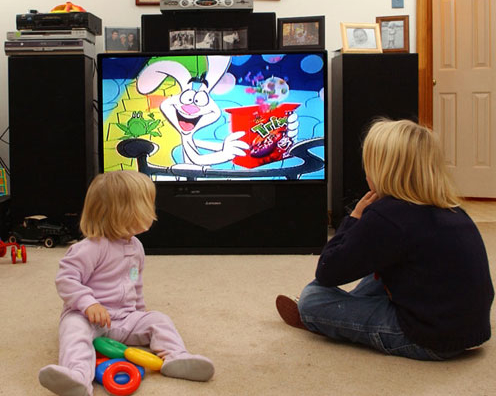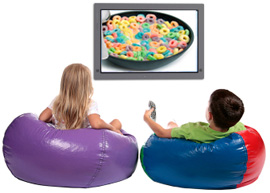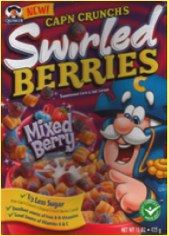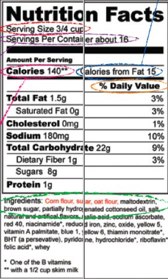




Food Ads
Food ads regularly target our children.
According to a report by the Rudd Center, just in the year 2019, 2-5 year-olds saw an average of 830 fast-food TV ads; 6 to 11-year olds saw 787 ads and 12-17 year-olds saw 775 ads.
The Centernotes that the fast-food industry spent 5 billion on advertising in 2019.
Black and Latino youth were targeted disproportionally in these food ads.
Impact of a 30-second commercial
Research suggests that even a short exposure from a 30-second commercial can influence the food preferences of a preschool child.

According to a report by the Rudd Center, just in the year 2019, 2-5 year-olds saw an average of 830 fast-food TV ads; 6 to 11-year olds saw 787 ads and 12-17 year-olds saw 775 ads.
The Centernotes that the fast-food industry spent 5 billion on advertising in 2019.
Black and Latino youth were targeted disproportionally in these food ads.
Impact of a 30-second commercial
Research suggests that even a short exposure from a 30-second commercial can influence the food preferences of a preschool child.

Kinds of Foods Advertised to Children
Ads Kids See
Of the 8,854 ads reviewed for the Kaiser Family Foundation Study (2007)
Foods high in sugar, fat, and salt
Researchers at the University of Chicago watched nearly 100,000 30-second advertisements for food products including breakfast cereals, snacks, sweets and drinks, that were aired on television during programs watched by two- to 17-year-olds.
The results of this long-term study published in the scientific journal Pediatrics (2007) showed that of the more than 50,000 food ads seen by children aged 2-11, 97.8 percent of were for products high in fat, sugar and sodium, or salt.
The older age group didn’t fare much better. Of the more than 47,000 food ads researchers watched targeting the 12-17 year olds, nearly 90% of the food ads were also for foods of poor nutritional quality. LINK

Of the 8,854 ads reviewed for the Kaiser Family Foundation Study (2007)
- 34% for candy and snacks
- 28% for cereal
- 10% for fast food
- 4% for dairy products
- 1% for fruit juices
Foods high in sugar, fat, and salt
Researchers at the University of Chicago watched nearly 100,000 30-second advertisements for food products including breakfast cereals, snacks, sweets and drinks, that were aired on television during programs watched by two- to 17-year-olds.
The results of this long-term study published in the scientific journal Pediatrics (2007) showed that of the more than 50,000 food ads seen by children aged 2-11, 97.8 percent of were for products high in fat, sugar and sodium, or salt.
The older age group didn’t fare much better. Of the more than 47,000 food ads researchers watched targeting the 12-17 year olds, nearly 90% of the food ads were also for foods of poor nutritional quality. LINK

Ads Everywhere
TV- the tip of the iceberg
Many previous studies have focused largely on marketing to our children via TV. However, TV is only the very tip of a very large iceberg!
In a world surrounded by cell phones, mobile music devices, instant messaging, videogames, and virtual three dimensional worlds, the advertisers have many more vehicles for reaching our children than the traditional TV, radio, magazines and newspapers of years gone by.
Commercials on game sites
Children can easily enter the world of the commercial through some of the games they choose to play. Just check out a few of these to see what we mean:

Many previous studies have focused largely on marketing to our children via TV. However, TV is only the very tip of a very large iceberg!
In a world surrounded by cell phones, mobile music devices, instant messaging, videogames, and virtual three dimensional worlds, the advertisers have many more vehicles for reaching our children than the traditional TV, radio, magazines and newspapers of years gone by.
Commercials on game sites
Children can easily enter the world of the commercial through some of the games they choose to play. Just check out a few of these to see what we mean:

Product Packaging
Preparing to say "no"
Knowing the tricks that advertisers use on product packaging will prepare you as to how to say NO when your children start begging for products.
Let’s consider a sample product.
First, what do you notice about the front and back of this cereal box?
Knowing the tricks that advertisers use on product packaging will prepare you as to how to say NO when your children start begging for products.
Let’s consider a sample product.
First, what do you notice about the front and back of this cereal box?
- How does the front side of the package differ from the backside?
- What about this box appeals to kids on the front and backsides?
- What about this box appeals to parents on the front side? Hint: Parents have to be convinced that this product is OK for their kids to eat.
- What tricks are used on both the front and on the backsides of the box?
- Front of the Box, Side of the Box, and Back of the Box, in that order:







